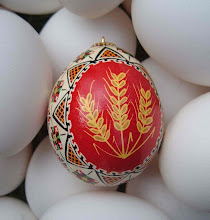With the wet weather the gardens are getting in later than usual, but the pests have hatched on time. So this year they're voraciously waiting for our seeds to hatch. I think that seedlings are even more susceptible than seeds, and so I always grow my squash family plants from seed in the garden, rather than transplanting.
Striped Cucumber Beetles are about 1/4 inch long, with a rectangular back striped yellow and black.
They will feed on all cucurbits except watermelon, plus tomatillos and a few other plants. (I've found them on tomatoes and milkweed). They like the undersides of leaves, especially lower down on the plant, and the interior of blossoms. (There is another species called Spotted cucumber beetle, which we don't have).
About 30 days after the infected beetles start to feed on a plant, the water-carrying pores in the plant stems become clogged with bacteria and the plant wilts dramatically and dies. It's very important to get rid of the cucumber beetles, their eggs and larvae. We may get as many as four generations during the summer, and if the last generation in the fall has fed from plants carrying disease, the disease will carry over the winter in the bodies of the cucumber beetles. So pulling and destroying any plants with the wilt will also reduce the amount of disease next year.
The plants can be protected by floating row cover, or by spraying with a kaolin clay. The floating row cover (the best known is Reemay, but you can get a lighter-weight insect control fabric, which is a spun polyester) keeps the beetles from getting to the plants, and is a useful solution for root maggots, potato beetles, and bean beetles as well. The cover has to be removed at blossom time for pollination. Otherwise you can get varieties that are parthenocarpic, meaning they don't require pollination. They'll also be seedless if protected from pollination. Johnny's seeds shows varieties that are parthenocarpic in their descriptions.
Surround is one brand of kaolin clay, available from Gardens Alive and perhaps other places, which will keep the cucumber beetles from eating. These are the two best solutions to prevent feeding. I've found that the Surround even lasts through a rain or two. The most difficult thing about it is application. It tends to clog sprayers, but the fine mist of a sprayer covers better than applying by hand. (You might experiment with Kaopectate, but I've really no idea if it would work, or if there's anything in it that would harm the cukes. It's obviously edible, so that's not a problem. Try it on just a few plants at first.)
The beetles can be killed with rotenone and/or pyrethins (sometimes called pyrethrum), acceptable on organic programs. But even killing the beetles that have landed on the plants will potentially let them feed initially and transmit the disease, so prevention is the best strategy. (The disease is transmitted through their feces which contaminate the open wounds in the plant from their feeding).
The beetles are even more attracted to tomatillos than to cucumbers, so tomatillos can be grown as a "trap crop" to collect the beetles away from the plants you want to grow. Then it's important to collect and destroy the beetles on the tomatillos, so they don't build up a big population that way. The tomatillos don't particularly suffer from the beetles, and you can use them in salsa. I wonder whether having a large number of beetles that feed exclusively on tomatillos will reduce the number of infected beetles (since the tomatillos don't have bacterial wilt), but don't know if that's so.
During cucumber beetle season turn over the lower leaves of plants in the early morning when the beetles are sluggish, and either catch the beetles and throw them into soapy water, or crush them. They fly readily, so catching them in mid-day is difficult. Also rub off the yellow eggs they've laid on the undersides of the leaves.
Some varieties of cucumbers and summer squash are more attractive to the beetles, and some are more susceptible to the disease. If you pay attention to the varieties you grow you might be able to determine this. County Fair is a variety of cucumber (available by catalog) reputed to be somewhat resistant to the bacterial wilt.
Another strategy is to plant successive crops of cucumbers. Often we'll get some cucumbers before the wilt destroys the plant, so if you've planted every 2 weeks you may get an adequate harvest in spite of the disease.
This is the most challenging pest we face in our Community Gardens, since the damage from the disease is irrevocable.





